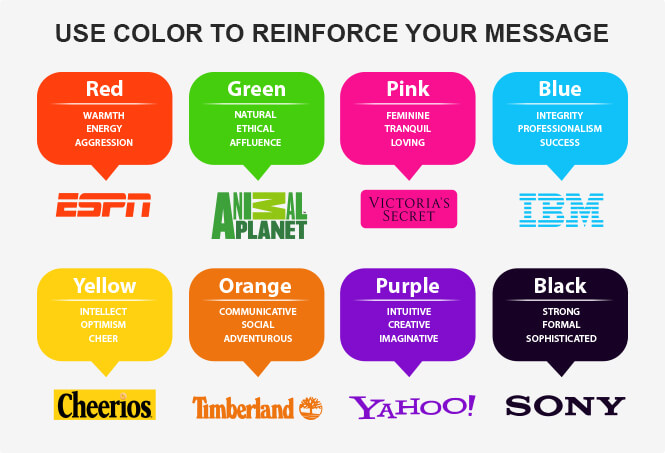● DESIGN 12.08.2022
● DESIGN 12.08.2022

Tough times for those who fail to stand out, especially online. Did you know that your brand image is the most persuasive business card there is to attract potential customers? That’s why in this article I will explain how to build a digital brand identity for your business in 5 steps.
The web is that fascinating and unpredictable place that offers great opportunities to companies able to exploit its boundless potential to improve their online visibility. Just as powerfully, it throws those who do not know the rules of the game into oblivion.
The risk of quickly falling into neglect and ending up being lumped in with hundreds of other businesses that mistakenly thought they had the idea of the century is more than concrete.
If, when asked the question “who should I target?” your company is the first option in the mind of a potential customer, it means that your brand identity is working great.
If not, you had better continue reading.
Building a brand identity from scratch is no mean feat. First of all, creating a brand identity is not limited to the creation of a logo or image.
A strong identity for your brand makes your target audience recognise the values of your company, enabling it to become the main reference point for certain worldviews shared by users.
Capture attention, convert it into interest and create a bond with your audience: let’s see how to build your digital brand identity in 5 moves!
Identifying the target audience you want to address and the goals you want to achieve are the first steps of effective brand building.
To do this, it can certainly be useful to analyse the strategy of your competitors:
Knowing your competitors’ approach gives you some important pointers: it can help you understand how your brand identity may differ from others and how to create a message that makes you different from them.
People are the core element of your strategy: after you have identified those your competitors are targeting, it is time to build your own target audience! Here you will need to build an ideal model of what the audience interested in your brand might be.
The identity of a brand is nothing more than the dialogue it is able to establish with those it addresses. For this conversation to be successful, you have to know your interlocutor!
Only after you have gathered the useful information that will allow you to get to know your potential customer, can you start laying the foundations for the creation of your brand identity.
In this phase you will have to put all your originality into motion. From the creation of a logo to the construction of a real message: nothing should be left to chance.
It will be important, therefore, to have a clear value proposition that effectively expresses your company’s image. Clearly stating your objectives will allow you to directly and unambiguously convey the values that your business will stand for.
Your value promise should represent a point of contact between you and the expectations of your target group. We could speak of a kind of compromise whose aim is full satisfaction for both parties.
The ideal value proposition will have the ability to:
For your message to be effective, you need to give the brand a convincing look.
The visual aspect must be able to communicate immediately what is not said. Images, colours, material objects: each element serves to express the essence of your brand.
Precisely for this reason, you should pay close attention to the care of your logo and brand name. Originality and creativity are winning weapons, but don’t forget to keep it simple and incisive!
The name must be immediately understandable and leave no space for confusion. The best thing you can do, if your brand does not yet have one, is definitely NOT to copy names already used by others.
Keep your mind focused, jot down some ideas and try not to be trivial!
When thinking of a suitable name for your brand, you should not overlook the logo it should go with. From the font, which should be as personalised and simple as possible, to the colour palette, nothing should be left to chance.
Speaking of colours: did you know that some are better suited to your communication needs than others? Each shade represents different emotions, so your task will be to find the ones that best suit the message you want to convey with your image.

If you wanted to give your brand a sophisticated look, your choice could be colours such as purple or black; to send a message expressing positivity and exuberance, yellow and orange tones would be more appropriate.
These are of course examples; there is no fixed rule expressly forbidding the use of certain colours in certain circumstances. The important thing is to be clear about the emotions you want to focus on and to avoid using too many colours.
Just like the name, the logo also needs simplicity. That is why it is essential to have one that fits and is readable everywhere: on the website, on social media and in print.
People like listening to stories.
As the narrative gets closer to their personal lives and experiences, more your potential customers will be interested in listening to you.
Impactful brand storytelling can really make a difference when it comes to creating a strong and shared identity. The values and principles you want to convey will gain strength if there is a narrative to support them.
A product that is completely identical to others will only stand out because of its ability to arouse emotions in the target audience.
Have you ever thought about the reasons why Apple or Ikea became leaders in their respective fields? The quality and aesthetics of the products are important, but they are not enough to account for such success.
Consumer perception does: people do not so much rely on the product as on the idea they have built around it.
The representation of scenes that could very well be part of everyone’s experience, the propensity for inclusiveness, the openness towards the other: these are some of the factors that have led these companies to create a very strong bond with their audience, to the point of outperforming adversaries whose product quality is nothing less than theirs.
In case you’re wondering: yes, the moving narrative in which a child realises his dream of feeling big by gaining centimetres in height thanks to the adaptability of Ikea furniture is much more effective than it sounds!
To be able to sell you need to be able to attract, but first of all, involve!
Nobody likes liars or inconsistent people.
Whatever type of emotion you want to arouse, it must be authentic and supported by the correct tone of communication, which must be as in line as possible with the message you intend to convey, as well as maintaining its consistency over time.
If your promise of value is not fulfilled, your brand will inevitably lose credibility. Cheating is not an option! So be as authentic as possible and avoid lying to your audience, because sooner or later they will discover you.
What you absolutely must NOT do is to launch messages that are not in line with what is stated as your brand’s mission. This only confuses your audience, with counterproductive outcomes that in some cases may lead to customers abandoning your brand.
At this point what you have to do is ‘simply’ spread your message. How to do this?
Let’s start with an assumption: you most likely cannot do this alone. You will therefore have to refer to professionals with different kinds of technical and creative skills.
Structuring a website in which no detail is left to chance, which entices every visitor to return to it with the prospect of becoming a customer, is by no means easy. Likewise, trying to position oneself in SERPs correctly requires certain skills that not everyone possesses.
It doesn’t end there: in addition to getting people to find your website, you must also make sure they stay there. This is where content marketing comes in, which must present original and quality content, as well as social media marketing, through which you will be able to create different strategies for the various social media in which you decide to move (and even here, do you know which ones you need to work on?).
In short, going it alone does not seem to be the best option. If you want to succeed, you can’t just stay afloat with makeshift means, you have to choose an experienced crew!
That’s why you need a Growth Agency to help your brand grow in every aspect. Thanks to the diversified professionalism and expertise within its ranks, BiscuitWay is committed to realising your digital brand identity in all its components: dall’ideazione dell’immagine aziendale al design del logo, dal pay off al copywriting e così via.
Whether you have a clear plan in mind, many confused ideas or none at all, it doesn’t matter! BiscuitWay takes care of your business from A to Z, enabling you to achieve an image that speaks about you in a coherent, sincere and attractive manner.
Contact us, we’ll work out how to build your digital brand identity in 5 steps!
Written By
Gabriella Massara
Marketing Specialist